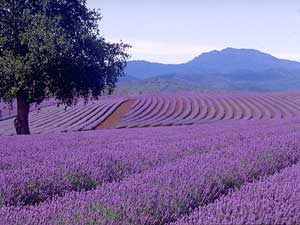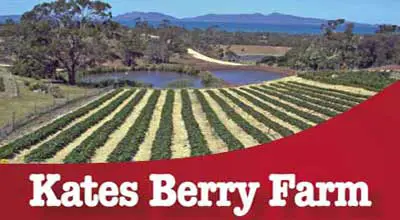This drive begins in Launceston and travels the whole east coast of Tasmania, touching the Bay of Fires, Ben Lomond National Park, Freycinet Peninsula, Maria Island and the Forestier and Tasman Peninsulas. To make it a round trip from Hobart, drive to Launceston from Hobart via Midland Highway prior to commencement of this drive. To make it a round trip from Launceston, drive back to Launceston from Hobart via Midland Highway after completing this drive.
Location
From Launceston to Hobart via East Coast.
Length
647 km (plus 197 km between Hobart & Launceston if a round trip)
Features and Attractions
Richmond; Port Arthur; Tasman National Park; Freycinet National Park; Bicheno; St Helens; Bay of Fires; St Columba Falls; Scottsdale; Launceston; Campbell Town


Day 1
Leave Launceston via Elphin Road and Tasman Highway. The first major town reached is Scottsdale (62 km; lavender farm). Continue following the Tasman Highway east to Tulendeena. Not far off the main road is the town of Legerwood where an avenue of trees had been planted to honour World War 1 soldiers who came from the area. When the trees grew to a dangerous height and needed to be lopped, chainsaw sculptor Eddie Freeman was called in to create memorials to the soldiers by carving the trunks to represent the men the trees honoured. This unique work of art is a must-see for anyone passing through the area.
Return to Tasman Highway, following it through the forests of North-East Tasmania to Branxholm and the former tin mining town of Derby. Classified as an historic town, Derby's main attraction is its excellent Tin Mine Centre where you can enjoy the best scones and tea at the tearooms attached while learning about the town and its mining past. St Columba Falls can be accessed from the town of Pyengana further down the highway. 'Pub in the Paddock' at Pyengana is one of Tasmania's oldest country pubs (circa 1880). Continue along Tasman highway to St Helens, the major service town in Tasmania's north-east corner. Drive north along Binalong Bay Rd to Binalong Bay at the southern end of the Bay of Fires. The red lichen on the rocks is quite spectacular. Return to St Helens for the night. 190 km


Day 2
St Helens is the largest town on the Tasmanian east coast and is blessed with a mild, almost perfect climate that is warmer than Melbourne in winter but just pleasantly warm (not hot) in summer. St Helens is also the starting point for treks to the mostly uninhabited extreme north-east corner of Tasmania where you will find Ansons Bay, Eddystone Point, Mt William National Park and Cape Portland. Drive south from St Helens to the surfing town of Scamander.
Proceed along Tasman Highway, then right into Esk Highway to St Marys. Continue along Esk Main Rd to Fingal. At Fingal, turn right towards Mathinna along Mathinna Rd; follow signs to Evercreech Forest Reserve which is home to the world���s tallest white gums (over 90 metres). Return to Fingal, turn left onto Esk Main Rd, and return to St Marys. Day 6: Leave early if you can to allow as much time as possible in Freycinet National Park. Continue south from St Helens to the surfing town of Scamander.
Proceed along Tasman Highway, then right into Esk Highway to St MarysTurn right at St Marys along Gray Road and into Elephant Pass Road. Travel down Elephant Pass, turning right into Tasman Highway towards Bicheno. Proceed to Coles Bay, the gateway to Freycinet Peninsula and today's final destination. Freycinet National Park offers a wide variety of activities. The greater part of Day 3 has been set aside for relaxing at Coles Bay or exploring Freycinet National Park. It is suggested you use the remaining time on Day 2 to visit the National Park's Visitor Centre to plan the next day's activities, remembering that it is necessary to leave Coles Bay mid afteroon on Day 3 to reach our next evening's destination before dark. 114 km


Day 3
Day three is spent in and around Coles Bay and the Freycinet Peninsula. The most popular walk in Freycinet National Park is up to the pass overlooking the perfectly shaped Wineglass Bay. If you find a long walk daunting, there are less strenuous activities like beach strolls, swimming or wildlife spotting. Aim at leaving Coles Bay by mid afternoon. Proceed south along Tasman Highway through the towns of Swansea and Ravensdale, then on to Triabunna, a prosperous fishing port and timber town located on the shores of Spring Bay. Book your accommodation at Triabunna for two nights as the following night will also be spent here. 108 km


Day 4
The highlight of Day 4 is a trip to Maria Island (National Park entry fees apply). With its great mountain views (Mount Maria rises to 710 m and ���the Bishop and Clerk��� reaches 915 m), sweeping bays, rugged cliffs that tumble into the sea, jagged rocky outcrops (the Painted Cliffs are a must-see), empty beaches and remarkably tame wildlife, Maria Island lies 4 km offshore. Another attraction is its historic convict ruins. Walking (suggested walks), bicycling, swimming, snorkelling, diving, bird watching, wildlife observation and relaxation are all activities undertaken by visitors.
A bicycle is a must for those who want to see as much of the island as possible on a day trip (there are no vehicles on the island) so be sure to hire one in advance. There are no shops on the island, and drinking water is limited, so bring everything you need in terms of food and drink with you. Be sure to be up early to be at the Triabunna Wharf by 9 am before the ferry or organised tour (booking tours in advance is essential) leaves for the island. The last ferry leaves the island around 5pm. Return to Triabunna for the night.


Day 5
Drive south from Triabunna to Sorell, turning left into Arthur Highway towards Forcett, Copping, Dunalley and on to Eaglehawk Neck. There are some fabulous coastal features to see around the Neck before heading further south, these include the Tessellated Pavement, Tasman Arch, Blowhole, Fortescue Bay and Cape Raoul. Check out Doo Town and have a chuckle at the funny house names there. Head west then south along Arthur Hwy to Taranna with its historic convict station, Tasmanian Devil Park and the Federation Chocolate Factory.
Continue South to the Port Arthur convict settlement ruins, which is Australia's foremost convict historic site. If the story of Port Arthur and the history of convicts in Australia captures your imagination, it is likely that your stay at the Port Arthur site will fill the rest of the day. In this case, you will need to arrange accommodation somewhere on the peninsula. Lufra Country Hotel at Eaglehawk Neck has spectacular views down the coast to wake up to, though there is plenty of other accommodation in the area from which to choose. 100 km


Day 6
There are plenty of convict related ruins, relics and buildings on Tasman Peninsula other than Port Arthur that can be visited on Day 6 before making the journey to Hobart. If you have an interest in convict history, head north at Premaydena to the convict station and coal mine ruins beyond Saltwater River. Return along Nubeena Rd to Koonya and Taranna (both have former convict stations). If you'd prefer a bit of adventure, everything from boat tours & cruises, bushwalking in the Tasman National Park (9 walks of differing lengths and degrees of difficulty), diving, horse riding, fishing, sea kayaking to abseiling and rockclimbing are to be enjoyed here.
Visit the Tasman Peninsula website for all the options. Before you leave the peninsula, be sure to drive to the end of Safety Cove Rd past Port Arthur to Remarkable Cave, a huge water-filled rock cave/natural bridge on the coast. If you check the tidal information before you go and plan your visit to coincide with low tide, you can actually walk through the cave and onto a sandy beach on the ocean side. Return along Safety Cove Rd, past Port Arthur to Eaglehawk Neck, then head north along Arthur Hwy via Dunalley and Sorell to Hobart. 135 km




